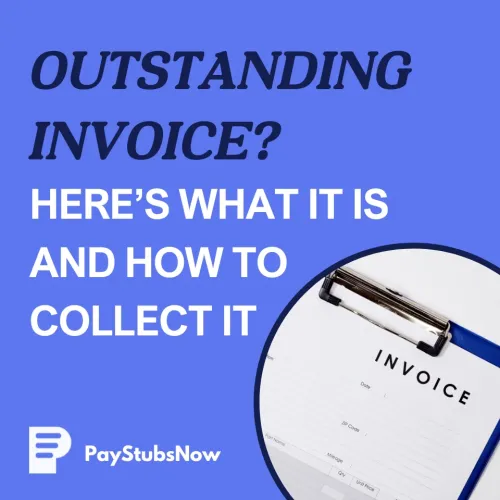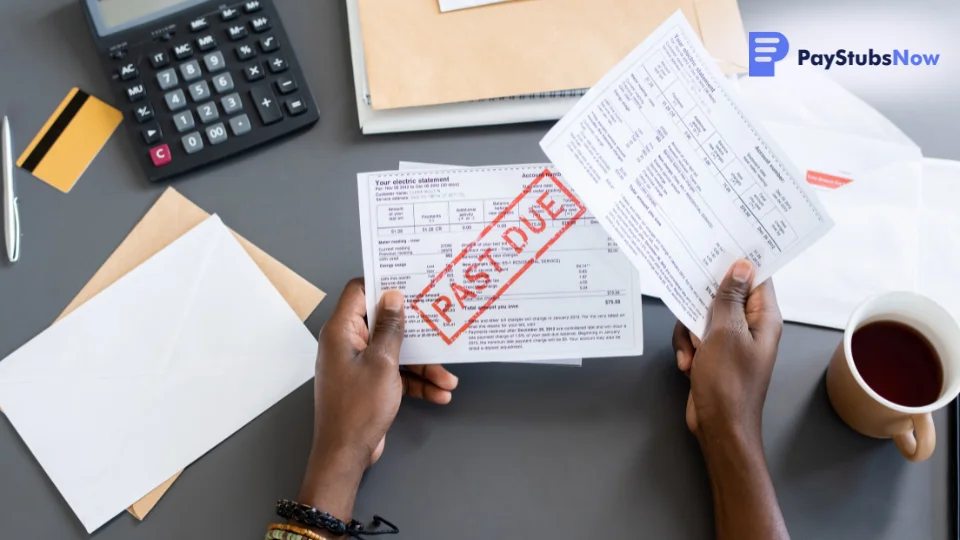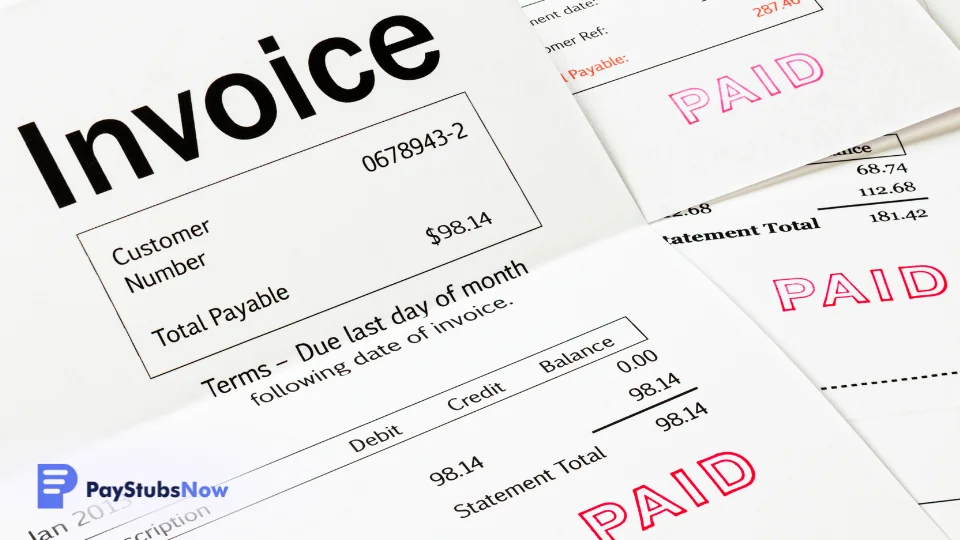


If you're running a business, managing invoices and ensuring timely payments can be a challenge. At some point, you'll likely encounter outstanding invoices—payments that haven’t been made on time. Understanding what an outstanding invoice is and how to effectively manage and collect overdue payments is crucial for maintaining healthy cash flow and sustaining business operations.
This guide clarifies what an outstanding invoice is and lists the most common reasons for unpaid invoices. It also offers strategies for ensuring timely invoice payments and shares helpful tips for writing emails in the event of overdue invoices.

An outstanding invoice is one that has been issued to a client but has not yet been paid. However, it is important to note that an outstanding invoice may not necessarily be overdue; it may simply be awaiting payment based on the agreed-upon terms. As an essential part of business operations, it ensures clients are aware of their financial obligations even before the due date.
Unpaid invoices refer to invoices that have not been paid by the customer. Although the terms "outstanding" and "unpaid" are often used interchangeably, these invoices can refer to those that are either outstanding or have become past due.
A past due invoice is one where the due date has passed, and the payment remains unpaid. This situation is critical as it directly affects cash flow and could result in additional steps, such as late fees or more persistent follow-ups, to encourage the customer to settle the outstanding balance.
Outstanding invoices, if not managed properly, can have significant consequences for your business. These invoices can:
When payments aren't made on time, your company's cash flow is interrupted, making it difficult to manage operational costs, payroll, and investments in future endeavors. Not only that, but this can lead to several negative outcomes, including late payment charges, damaged employee relations, and the worst-case scenario: needing to let go of your employees.
Repeated payment issues can strain relationships with clients. If not addressed appropriately, clients may feel uneasy about working with you, leading to a loss of trust and potentially jeopardizing future business engagements.
Chasing overdue payments consumes valuable time and resources that could instead be allocated toward business growth. The ongoing administrative burden of constantly following up can become overwhelming for your team, diverting attention from essential tasks and strategic initiatives.
The longer an invoice remains unpaid, the greater the risk of needing legal intervention or hiring a collection agency. Both of these options incur financial costs and demand considerable time and effort.
Unpaid invoices pose a threat to your business credit score, which is crucial for securing loans and favorable payment terms in the future. A weakened credit rating can restrict your financing options and hinder your business’s ability to thrive and expand in competitive markets.
Understanding the reasons for unpaid invoices can help you prevent them. Common causes include:
If your payment terms or instructions aren’t clear from the outset, clients may not fully understand when or how to pay, leading to delays.
Invoice mistakes, like incorrect amounts or missing details, can confuse clients and delay payments. Ensuring your invoices are accurate is essential to smooth payment processes.
Sometimes, clients may not be aware that an invoice is due or that they have overlooked it. Effective communication is key to avoiding these issues.
Clients may experience their own financial difficulties, which can delay payment. While this is beyond your control, understanding their situation can help you decide how to approach the payment follow-up.
With the endless hustle and bustle of the fast-paced business world, it's easy to forget about invoices. Sometimes, they may just be misplaced. Regular reminders can help keep the invoice on the client’s radar.
If you don't have a procedure in place to remind clients to pay outstanding invoices, it’s easy for them to fall through the cracks and end up past due.
 Taking proactive steps to prevent outstanding invoices is the best approach. Here’s how you can set yourself up for success before an invoice becomes unpaid:
Taking proactive steps to prevent outstanding invoices is the best approach. Here’s how you can set yourself up for success before an invoice becomes unpaid:
From the start, ensure that your payment terms are clearly outlined. This includes specifying the due date at the top of every invoice. If you have clients who frequently pay late, consider adding additional notes about payment terms and due dates to the invoice to emphasize the importance of timely payments.
Make sure your invoices are detailed and error-free. Promptly sending them shows that you are a professional and sets an expectation for timely payment. For example, if you are a freelancer , sending a timely invoice and following up with it is important for establishing and maintaining a strong reputation, especially if you’re hoping to become a regular contractor or employee with a particular client.
Offer discounts to encourage clients to pay early. For example, you could offer a 2% discount for payments made within 14 days. In addition, providing various payment options, such as credit cards or bank transfers, can make it easier for clients to pay on time.
To streamline collections and reduce overdue payments, automate first email reminders and focus on riskier accounts. Tailor your approach based on account size, payment history, and the amount owed.
Send early reminders for clients who frequently pay late, while larger accounts may do best with a more personalized approach, such as a polite phone call. Always send a consolidated reminder for all outstanding invoices to reduce confusion and avoid overwhelming clients with multiple requests.
 Collecting outstanding and unpaid invoices can be challenging, but implementing strategies like setting clear terms and sending regular, professional reminder messages can help bring the late payment back to the customer's attention. Here's how to approach collecting outstanding payments effectively:
Collecting outstanding and unpaid invoices can be challenging, but implementing strategies like setting clear terms and sending regular, professional reminder messages can help bring the late payment back to the customer's attention. Here's how to approach collecting outstanding payments effectively:
Overdue invoices are often the result of simple oversight, not intentional avoidance. Start by sending a polite reminder email a few days after the due date, reiterating the invoice amount and payment options. If payment is still outstanding after 30 or 60 days, follow up with additional reminders—gradually shifting your tone to be more formal and direct as needed.
If you notice too many outstanding invoices, consider implementing a late fee policy for new customers. Clearly state these terms in contracts or agreements to ensure customers are aware of the penalties for late payments.
When an invoice becomes overdue, try changing its appearance to catch the customer's eye. Use bright colors or a bold header to highlight the due date, the full amount owed, and any penalties. This visual change can create a sense of urgency.
Sometimes, a digital reminder isn’t enough. Sending a physical bill to the customer’s address or making a phone call can be more effective, ensuring a timely payment. These analog methods are harder to ignore and can prompt quicker payment.
Providing multiple payment methods, such as credit cards, ACH, or installment plans, can make it easier for customers to make invoice payments on time. Flexibility can help accommodate their financial situations while ensuring your business receives payments.
If 90 days have passed since non-payment, it may be time to consult a lawyer or debt collection agency. These professionals can guide you on how to proceed with legal action or negotiate settlements. Make sure to do your research and make sure that whichever option you choose is appropriate for your specific situation.
 Reminder emails are an essential part of the payment collection process, as they gently nudge clients to make payments and improve the likelihood of payments coming through without damaging client relationships. Below are key tips for writing effective, tactful, and professional overdue invoice emails.
Reminder emails are an essential part of the payment collection process, as they gently nudge clients to make payments and improve the likelihood of payments coming through without damaging client relationships. Below are key tips for writing effective, tactful, and professional overdue invoice emails.
Make sure the subject line clearly reflects the purpose of the email, such as "Payment Reminder: Invoice #12345 Due \ [Date]." This helps the recipient quickly identify the message's intent.
Open the email with a courteous greeting, addressing the recipient by name. This adds a personal touch and sets a positive tone for the message.
Include the invoice number and due date in the body of the email to remind the client of their obligation and avoid any confusion.
Be direct and transparent about the unpaid amount. Clearly stating the balance owed ensures there’s no ambiguity and avoids potential misunderstandings.
Politely explain how the delay affects your business. Emphasize the importance of timely payments without sounding accusatory, ensuring the client understands the broader context.
Conclude the email with a clear call to action, such as "Please make the payment by \ [date] to avoid further delays," and provide convenient payment methods to encourage action.
Throughout the email, maintain a professional and respectful tone. Avoid sounding too casual or overly harsh, and ensure the language remains courteous and businesslike.
Chasing down unpaid invoices can be time-consuming, frustrating, and harmful to your cash flow. This article explored practical strategies for reducing overdue payments—from setting clear terms upfront to following up with professional, well-timed reminders.
One of the most effective ways to get paid on time is by sending clean, consistent, and professional invoices. With Paystubsnow, you can create branded, accurate invoices in minutes using customizable templates that help you look more credible and make it easier for clients to pay. When invoices are clear and polished, they’re less likely to be ignored and more likely to be paid quickly.
Generate Invoices Now and take control of your cash flow!